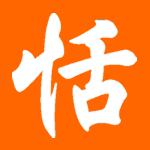larger view
Reader Theresa emailed in this cross-stitching template and wants to know if all the Chinese characters were written correctly. This template titled “Bonsai and Buddha” was designed by Nicholas Charles and manufactured by a company based in Reading, PA, USA called Dimensions.
寧 is missing a few dots in the 心 partial.
安 is missing a horizontal stroke.
气 should have written as the traditional version of 氣 to be consistent with the rest of characters.
康 is missing a top dot.


Might I add that the calligraphy looks particularly crappy.
ReplyDeleteThe calligraphy consists of cross-stitches framed by normal stitches, it's quite tricky to transform brush strokes in a pattern that basically consists of lots of quadrates. That explains the botchy calligrapyh - but not the omissions.
ReplyDeleteI have been trying to get the correct symbols for "Miss you, Dad." It is kind of a long story- so I will try to shorten a bit-- My Dad died on my birthday this year, June 10th. On the day of his funeral, my sister brought his favorite Chinese dinner to his home, our gathering place, "The Cabin." After we all ate, my sister and I opened our fortune cookies- one said Miss you and the other said Daughter! I immediately thought of getting "Miss you Dad" tattooed on my ankle. My problem is that I have a copy of the fortune cookie that says miss you but none that gives the symbol(s) for Dad- and I would like them to be correct and signify the true heartfelt meaning. Can anyone help me?? Thank you.
ReplyDeleteJane
Why not just do it in English?
ReplyDeleteEven if all of the characters are done correctly, most of them would not make sense. I mean, which direction are you supposed to read them?
ReplyDeleteIf we go by the traditional method (top to bottom, right to left), as the "plaque" on the right hand side might suggest, it would be:
安康幸神氣和福寧安靜空
Which is mostly gibberish.
If we read horizontally, we have to treat 安康 as its own entity, then based on 幸福, we would read the rest from right to left, then top to bottom:
安康幸福寧神安氣靜和空
Slightly less gibberish, but gibberish, nonetheless.
Then, perhaps top to bottom, then left to right:
福寧安靜空幸神氣和安康
etc.
I think I'm getting a headache. >_<
Jane--it's a very nice thought, and I sort of understand why you might want it in Chinese rather than English, though you might want to give that part a bit more thought. If you do go with Chinese, I'd suggest using either "懷念父親" or "懷念爹地" with a better font.
There are several terms in Chinese that have similar meaning to "missing" someone, such as:
懷念, 惦記, 思念, 想念, etc.
Then, there are several ways to refer to one's father, including:
父親 = father, formal
爸爸 = father, semi-formal (pronounced similar to "papa")
爹 = father, traditional (almost unused contemporarily; phonetically most similar to "dad")
爹地 = transliteration of "daddy"
I feel so sad and upset when i noticed that Chinese is misused and insulted that way.
ReplyDelete